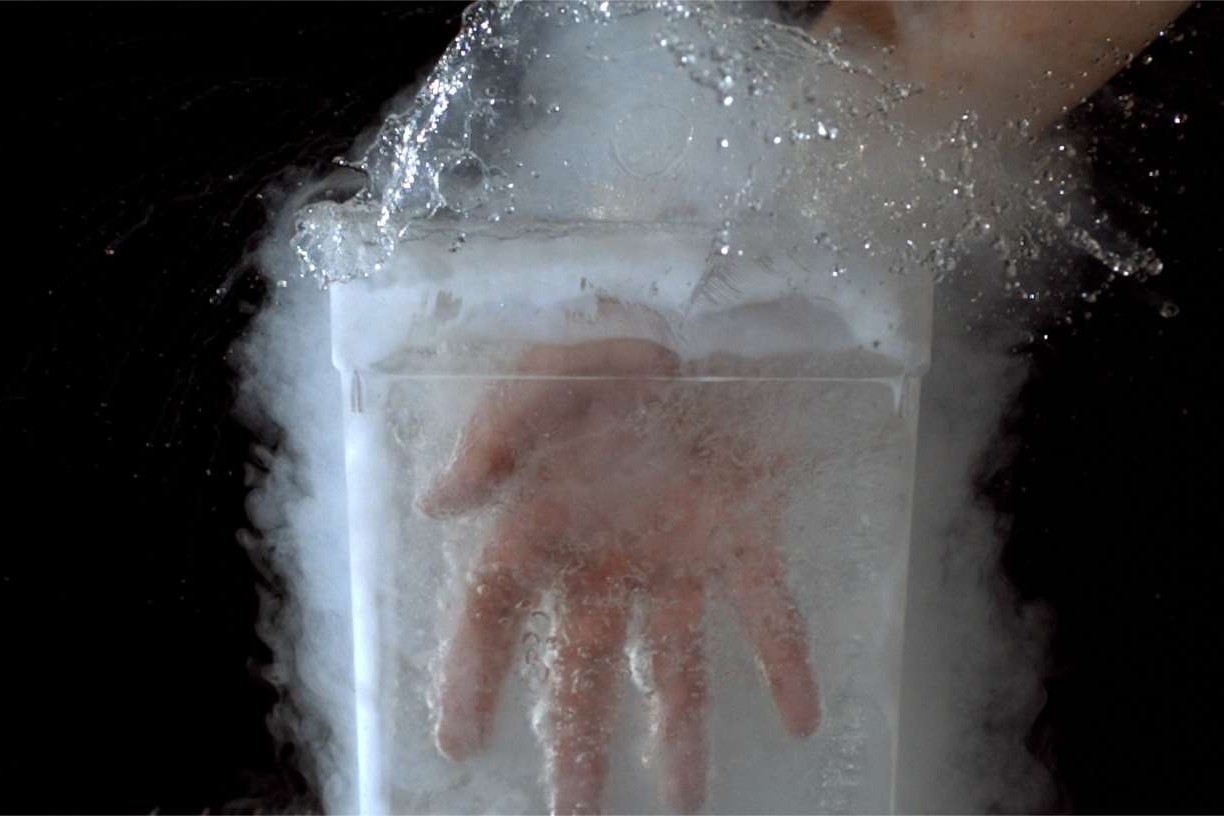
What is the Leidenfrost Effect? Imagine a droplet of water dancing on a hot pan without immediately evaporating. That's the Leidenfrost Effect. When a liquid comes into contact with a surface significantly hotter than its boiling point, it forms an insulating vapor layer that keeps the liquid from boiling away instantly. This phenomenon creates a cushion of vapor, allowing the droplet to skitter around the surface. Named after Johann Gottlob Leidenfrost, who described it in 1756, this effect isn't just a kitchen curiosity. It has practical applications in fields like cooling technology and material science. Curious to learn more? Dive into these 30 fascinating facts about the Leidenfrost Effect!
What is the Leidenfrost Effect?
The Leidenfrost Effect is a fascinating phenomenon that occurs when a liquid comes into contact with a surface significantly hotter than its boiling point. Instead of evaporating quickly, the liquid forms an insulating vapor layer that keeps it from boiling rapidly. This effect creates some truly intriguing behaviors.
- Named after Johann Gottlob Leidenfrost, a German doctor and theologian, who first described it in 1756.
- Occurs when the surface temperature is at least 200°C (392°F) hotter than the liquid's boiling point.
- The vapor layer reduces heat transfer, allowing the liquid to "hover" above the surface.
- Commonly observed with water droplets on a hot skillet.
- Can be seen with other liquids like liquid nitrogen and even molten metals.
How Does the Leidenfrost Effect Work?
Understanding how this effect works involves diving into the science of heat transfer and vaporization. Let's break it down into some key points.
- When a liquid droplet hits a hot surface, it initially spreads out.
- As the surface temperature increases, the liquid starts to evaporate rapidly.
- At a critical temperature, the vapor forms a stable layer between the liquid and the surface.
- This vapor layer acts as an insulator, preventing the liquid from making direct contact with the hot surface.
- The liquid droplet can then move around freely, almost like it's levitating.
Real-World Applications of the Leidenfrost Effect
This phenomenon isn't just a cool party trick; it has practical applications in various fields. Here are some examples.
- Used in cooling systems for nuclear reactors to prevent overheating.
- Helps in the design of heat-resistant materials and coatings.
- Applied in the manufacturing of microelectronics to manage heat dissipation.
- Utilized in certain types of cooking techniques, like searing meat.
- Researchers are exploring its potential in space travel for thermal management.
Fun Experiments You Can Try at Home
If you're curious about seeing the Leidenfrost Effect in action, there are some simple experiments you can try safely at home.
- Heat a skillet on high and sprinkle a few drops of water to see them dance around.
- Use a spoon heated over a flame and drop water on it to observe the effect.
- Try it with different liquids like alcohol or oil to compare results.
- Create a "Leidenfrost Maze" by heating a metal surface and guiding water droplets through a path.
- Use a hot plate and a small amount of liquid nitrogen for a dramatic demonstration.
Interesting Facts About the Leidenfrost Effect
Here are some lesser-known facts that highlight the unique aspects of this phenomenon.
- The effect can cause droplets to move uphill on a heated surface.
- It can be used to create "Leidenfrost stars," where droplets form star-shaped patterns.
- The vapor layer can support the weight of small objects, making them float.
- In extreme cases, it can cause liquids to form spherical shapes.
- The effect can be observed with molten metals, creating spectacular visual displays.
The Science Behind the Leidenfrost Effect
Delving deeper into the science, let's explore what makes this effect so unique.
- The vapor layer is created due to rapid vaporization at the liquid-surface interface.
- The insulating properties of the vapor layer reduce heat transfer by conduction.
- The effect is influenced by factors like surface roughness and liquid properties.
- Researchers use high-speed cameras to study the dynamics of the vapor layer.
- Understanding this effect helps in developing new technologies for heat management.
The Leidenfrost Effect continues to captivate scientists and enthusiasts alike, offering a glimpse into the fascinating world of heat transfer and fluid dynamics.
The Leidenfrost Effect: A Fascinating Phenomenon
The Leidenfrost Effect is a captivating scientific phenomenon. When a liquid comes into contact with a surface significantly hotter than its boiling point, it forms an insulating vapor layer. This vapor layer prevents the liquid from boiling rapidly, causing it to hover and move around the surface. This effect can be observed when water droplets skitter across a hot pan.
Understanding this effect has practical applications. It’s used in cooling systems, enhancing heat transfer, and even in some cooking techniques. The Leidenfrost Effect also inspires scientific curiosity and innovation, leading to new discoveries in physics and engineering.
Next time you see water droplets dancing on a hot surface, you'll know the science behind it. The Leidenfrost Effect is not just a cool trick; it’s a window into the fascinating world of thermodynamics. Keep exploring, and who knows what other wonders you might uncover!
Was this page helpful?
Our commitment to delivering trustworthy and engaging content is at the heart of what we do. Each fact on our site is contributed by real users like you, bringing a wealth of diverse insights and information. To ensure the highest standards of accuracy and reliability, our dedicated editors meticulously review each submission. This process guarantees that the facts we share are not only fascinating but also credible. Trust in our commitment to quality and authenticity as you explore and learn with us.
